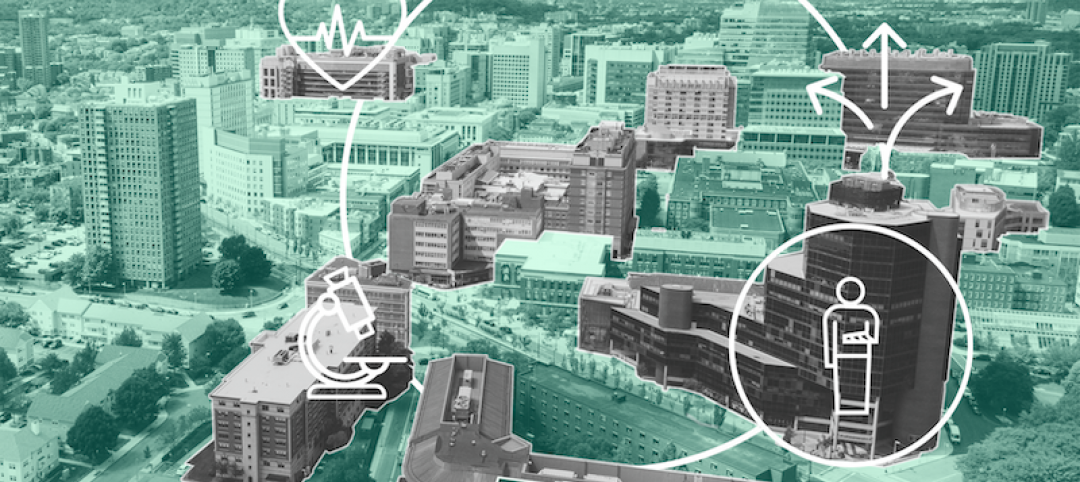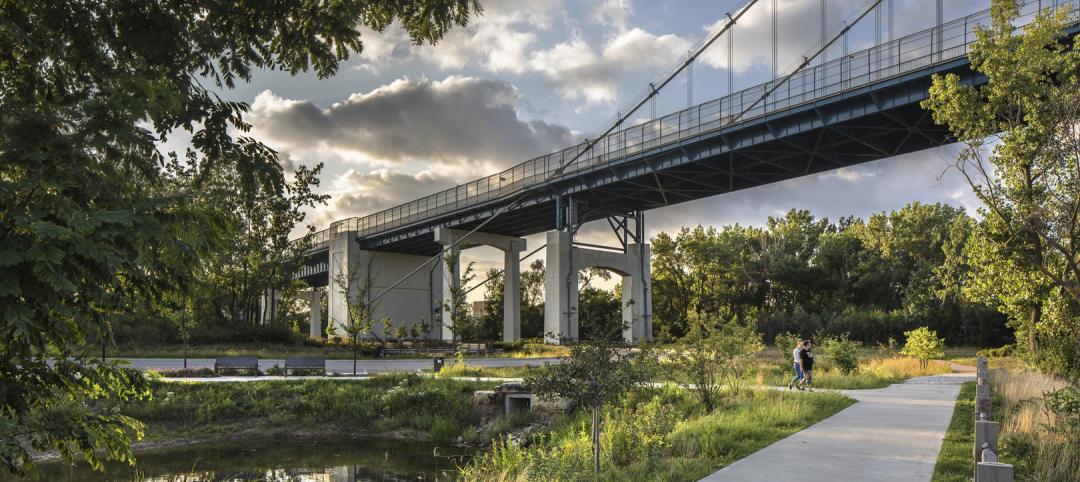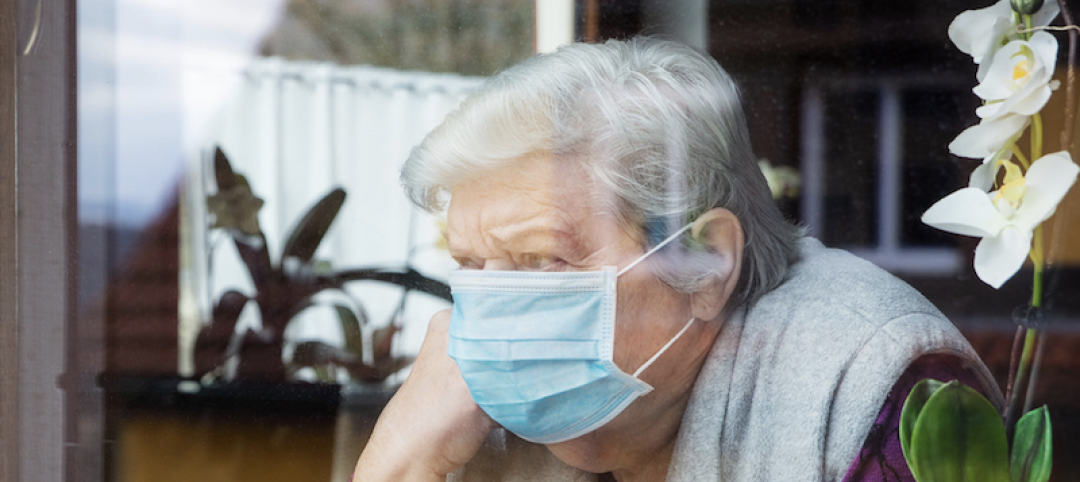The process of sourcing and winning work for Architecture, Engineering and Construction (A/E/C) firms requires time, resources, strategy and skill. A certain unflappability helps too when success can depend upon accepting and learning from failure. Right now, we’re at the height of the coronavirus crisis, still sheltering in place. Economic impact on the real estate industry is visible as projects pause, construction sites close and lease negotiations stall. COVID-19 will shape the future of our profession in ways we don’t yet understand. But we can use this moment as a test-case to build greater flexibility into how we pursue, win and deliver capital projects, better preparing the industry to meet the next disruption.
People-Centered Process
As professional service providers, we sell the intangible. Our portfolio and experience serve as "proof points." Steve Fox, co-founder of Fort Point Project Management (FPPM) in Boston, a firm that frequently serves as an owner’s representative in soliciting and selecting architects and contractors, comments that in the procurement process sometimes "the opportunity to speak about the real experience of the company and team gets lost in a race to the bottom."
FPPM instead advocates for a procurement model focused on people, their experience and how they will collaborate. Chris Pestana, FPPM’s Director of Marketing and Business Development, shares, "We ask questions like: How do all these personalities mesh? Is this partner someone we want to see and talk to every week?" FPPM’s process inverts the traditional order of procurement with an interview first, and then a formal RFP following a shortlist. This reverse methodology prioritizes trust, transparency, people and their strengths.
Zach Bergeron, Construction Manager and Associate at Vermeulens, a cost control services firm with offices in the United States and Canada, takes this a step further, advocating for a procurement approach that also has clear criteria and metrics, ranked in order of specific project priority. "Critical aspects such as staffing capacity, portfolio, the right approach, the best value (not the same as lowest fee) and who will be responsive to needs," should also be considered, he says.
"The thing that hasn’t changed is that when you do a good job, your client will sell business for you," says Joe Albanese, founder and CEO of Commodore Builders, a construction management firm in Boston. Bergeron agrees. "Get references. What we glean from an interview is helpful but it’s also important to check [recent past experiences]."
Ultimately, organizations will need to find ways to create and rank decision-making criteria they perhaps never before considered, build a stable of trusted partners, while also putting practices in place that ensure potential new innovative partners have a real opportunity to introduce themselves. A/E/C firms can help by focusing on brevity, directness and clearly communicating value proposition and capabilities.
Communication Evolution
Communication tools and tactics are a critical part of every procurement process. Despite the slowdown in procurement during this crisis, Albanese recognizes that new communication platforms everyone is now using have positively impacted business operations. "I see opportunities to leverage technologies and reach, to get teams together when historically it’s not been easy." There is a "fluency of distance communication" that is bringing more people together, faster. Albanese knows that our ramped-up use of technology could help or hinder how we all procure work in the future, as we navigate digital submittals and interviews.
"People are being more personalized and real in their communication," observes Director of Marketing at Commodore Kelli McLeod. We are being more open with peers, partners and clients in ways that wouldn’t previously been considered appropriate in the professional realm. Under physical constraints, we have accidentally become more human-centric, proximate, accessible to each other. Practicing procurement processes with more empathy and authenticity is a trend worth keeping.
Future of Fees
While fee is not the only criteria in our clients’ decision-making process, it can sometimes feel like it is prioritized. Ed O’Rourke, Director of Business Development for Commodore Builders, has witnessed "the erosion of A/E/C firms’ ability to procure certain work in low-bid environments" throughout his career. We are undoubtedly in such an environment now as the entire marketplace competes for fewer project opportunities.
Clients across all markets are currently requesting quicker bid responses, "they are realizing that we are capable of providing agile, rapid responses," O’Rourke says. Many clients who, prior to the pandemic, required lengthy hard-copy RFP submittals have now minimized requirements and are accepting digital responses. More clients may opt to issue requests to propose on master service agreements to more quickly procure services from a pool of prequalified experts.
It’s reasonable to anticipate that in the current climate design and construction fees may be driven down. Low-bid mentality may be a necessary reality for many institutions who have limited resources but must maintain facilities, nonetheless. As cash flow for colleges, universities and health systems diminishes, our best value in helping them to position for the future will be in the upstream work of strategic guidance and planning; important work that can generate lower fees than building projects.
Collaboration
One clear trend during this time that hopefully continues is the unprecedented level of industry collaboration, innovation and spirit of giving. Construction firms worked quickly to shut down sites, gather Personal Protective Equipment (PPE) supplies and deliver them to local hospitals. Design firms worldwide have re-tasked their 3D printers. Instead of making scale models, they’re scaling up production of ventilator valves and face shields for health professionals.
A/E/C leaders have united in industry roundtables and working groups to meet the acute needs of the pandemic. Together they have developed best practices, creative ideas and plans for converting existing facilities for COVID-19 patients, as well as to design and erect temporary facilities for testing, hospital surge capacity and step-down care. The results of this collaboration will become a design community playbook for future pandemic preparedness facility protocols.
As the economic impacts of the global pandemic make themselves felt, we will all be asked to do more, with less. In an environment of scarcity, the pace of business from procurement through implementation will accelerate. Fast-track delivery models like design-build will become more common, and as resources will need to be shared, so too will cross-discipline and cross-industry collaboration increase. While we may find ourselves in an increasingly more competitive fee environment, the definition of what it means to compete will evolve to look like collaboration resulting in unusual and exciting partnerships.
While the full ramifications of COVID-19 on the A/E/C industry, our clients and society-at-large are still unknown, the path we’re forging together through this crisis will prepare us to meet the challenges of a post-pandemic world.
More from Author
SmithGroup | Oct 28, 2024
A case for mid-rise: How multifamily housing can reshape our cities
Often referred to as “five-over-ones,” the mid-rise apartment type is typically comprised of five stories of apartments on top of a concrete “podium” of ground-floor retail. The main criticism of the “five-over-one” is that they are often too predictable.
SmithGroup | Mar 28, 2023
Inclusive design requires relearning how we read space
Pulling from his experience during a campus design workshop, David Johnson, AIA, LEED AP, encourages architects to better understand how to design spaces that are inclusive for everyone.
SmithGroup | Feb 27, 2023
Surfing the Metaversity: The future of online learning?
SmithGroup's tour of the Metaversity gives us insight on bringing together physical and virtual campuses to create a cohesive institution.
SmithGroup | Nov 28, 2022
Data centers are a hot market—don't waste the heat!
SmithGroup's Brian Rener shares a few ways to integrate data centers in mixed-use sites, utilizing waste heat to optimize the energy demands of the buildings.
SmithGroup | Aug 3, 2022
Designing learning environments to support the future of equitable health care
While the shortage of rural health care practitioners was a concern before the COVID-19 pandemic, the public health crisis has highlighted the importance of health equity in the United States and the desperate need for practitioners help meet the needs of patients in vulnerable rural communities.
SmithGroup | Aug 10, 2021
Retail reset: The future of shopping malls
Developers and design partners are coming together to reimagine how malls can create a new generation of mixed-use opportunities.
SmithGroup | May 17, 2021
Future pandemic preparedness at the medical district scale
The current COVID-19 pandemic highlights the concern that we will see more emergency events in the coming years.
SmithGroup | Jan 25, 2021
Amid pandemic, college students value on-campus experience
All the students we interviewed were glad that they returned to campus in one form or another.
SmithGroup | Aug 13, 2020
Renewing the healing role of public parks
While we can’t accurately predict all the ways we will respond to the current COVID-19 pandemic, it should provide a moment of reflection as we see all too clearly the consequences of our exploitation and destruction of nature.
SmithGroup | Jul 21, 2020
How design of senior living communities must change after COVID-19
The cost of maintaining high quality of care and high quality of life for senior living communities has increased up to 73% for senior living communities that remain free of COVID-19 and up to 103% for COVID-19 positive senior living communities.
















